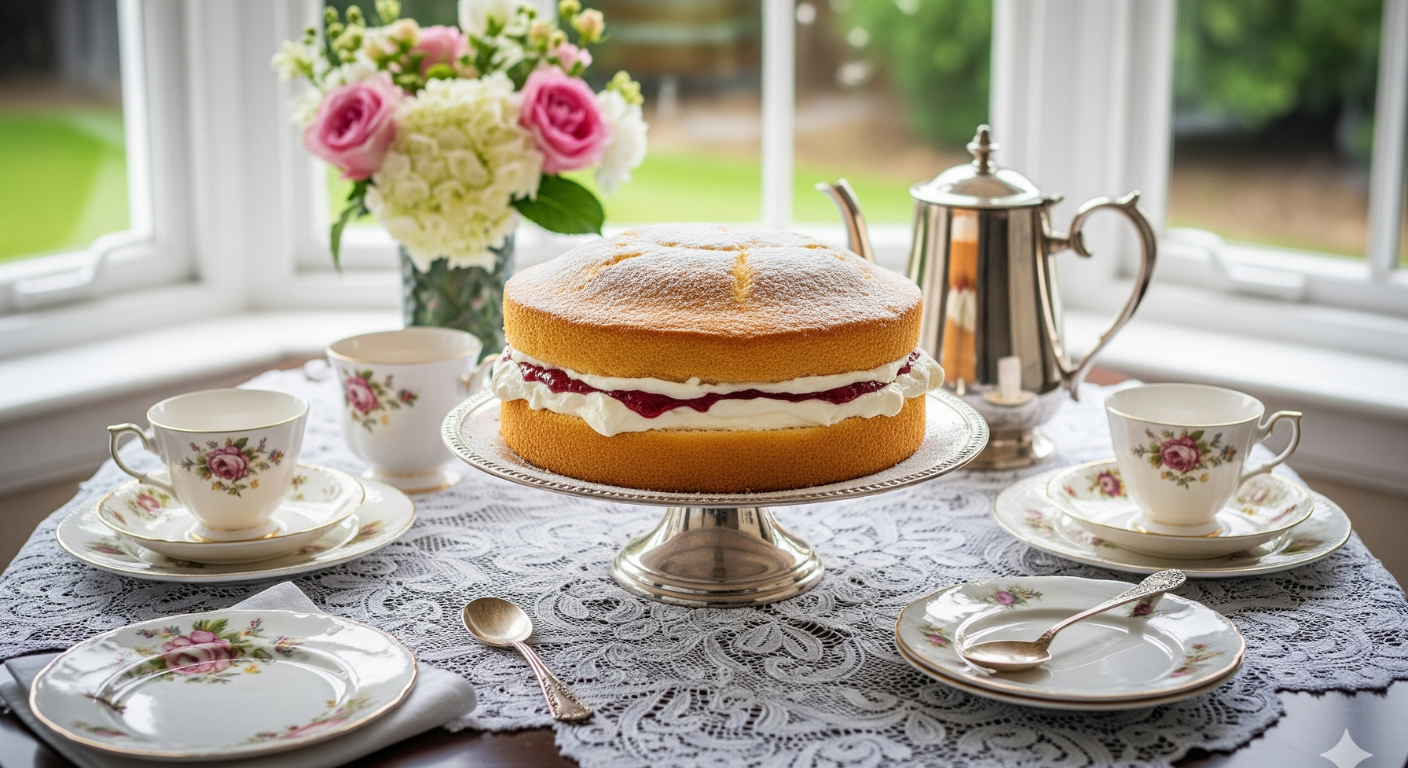
Blog
History of the Victoria Sponge – A Classic British Treat

The Victoria sponge cake is one of the most iconic British cakes. It’s the kind of cake that makes you stop, sip tea, and smile because it’s light, fluffy, and loaded with sweet jam and cream. However, beneath its understated elegance is a tale that is interwoven with British history and links royalty, custom, and the common pleasure of cake sharing.
What is Victoria Sponge Cake?
Before diving into its history, let’s answer the simple question: what is Victoria sponge cake?
The cake’s basic component is a light sponge, usually layered with buttercream or fresh cream and raspberry jam. Its balance not too sweet, not too heavy, just right is what makes it so adored. This cake is suitable for both afternoon tea and a child’s birthday.
Explore Victoria Sponge Collection:
The Victoria Sponge Cake Origin
During Queen Victoria’s reign in the 19th century, the Victoria sponge cake first appeared. There were sponge cakes before then, but they were frequently heavier and more akin to sweetened breads than the fluffy cakes of today.
Two key inventions changed everything:
- Refined flour and sugar became more widely available.
- Baking powder, discovered in the 1840s, gave bakers the power to create a light, fluffy sponge that rose beautifully in the oven.
Even Queen Victoria loved this new cake design. It soon became her favorite side dish for afternoon tea; a custom she helped spread. What started out as just a sponge with jam quickly evolved into the Victoria sponge cake, which is inextricably linked to her name.
Afternoon Tea and the Queen’s Influence
In Victorian Britain, afternoon tea was a social occasion as well as a meal. Cakes became the focal point of this tradition because of Queen Victoria’s love of tea and cake. Thus, the origin of Victoria sponge cake is as much a cultural as a culinary one.
Sponge sharing came to represent hospitality, sophistication, and joy. A Victoria sponge still evokes a sense of history and community when it is placed on the table.
A Cake for the People
The accessibility of the Victoria sponge cake is what makes it unique. This sponge was elegant enough for formal events but easy enough for home bakers to try, unlike intricate, heavily iced cakes. It served as a link between common kitchens and regal tea tables.
Recipes have been passed down through generations of families, each with a unique twist. Some people insist on using buttercream, while others prefer whipped cream, and still others stick to jam. However, the essence of the cake is always the same regardless of the version.
Why It’s Still Loved Today
The Victoria sponge has stood the test of time because it captures the very essence of British baking:
- Simplicity – Just sponge, jam, and cream.
- Tradition – A direct link to Britain’s cultural past.
- Comfort – A cake that feels like home.
In an age where cakes can be elaborate works of art, the Victoria sponge reminds us that sometimes, less truly is more. It’s the cake you bake when you want to share love without fuss.
The Legacy of a Classic
The Victoria sponge cake is now more than just a dessert; it is a representation of British culture. It is the cake that is served at afternoon tea tables, in cafés, on picnic blankets, and at village celebrations. Its history encompasses more than just Queen Victoria; it also includes the innumerable individuals who have baked, shared, and celebrated with it.
Final Crumb: A Slice of British Soul
The tale of the Victoria sponge cake is, in essence, the tale of Britain: modest but proud, elegant yet practical. From its origins in the 19th century to its current location on tables, it continues to serve as a reminder that the most joyous things are frequently the most basic.
So, you’re doing more than just tasting cake the next time you sit down with a slice. You’re tasting tradition, history, and a tiny bit of the country’s soul.
